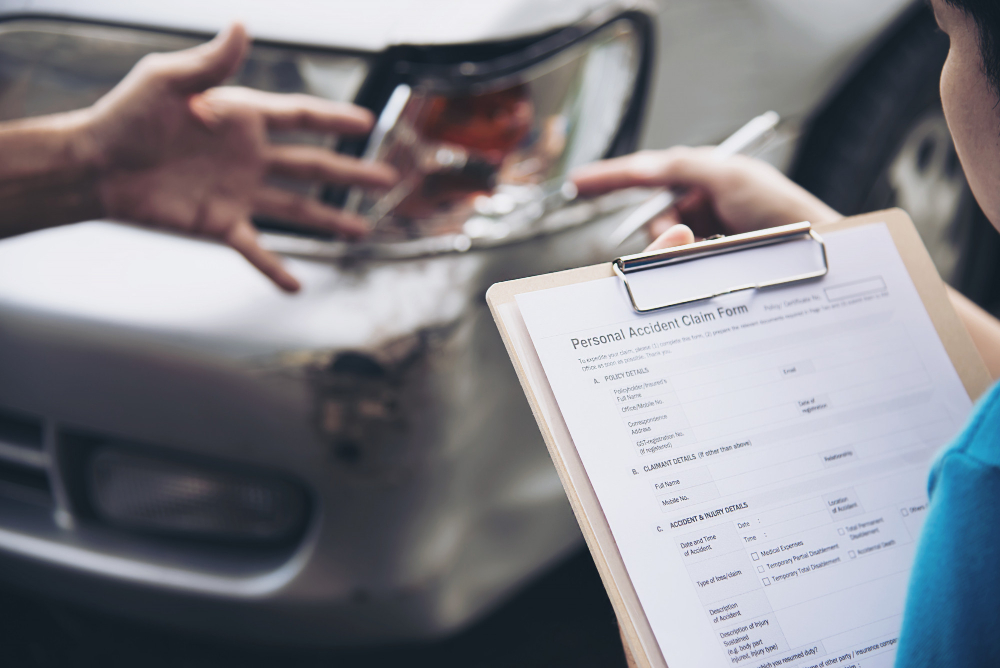Car accidents are an unfortunate reality that many of us have experienced in our lives. One of the most important steps after a car accident is filing an insurance claim. This process involves submitting information about the accident to your insurance company to receive compensation for damages. This process may seem daunting, especially if it is your first time filing a claim.
However, with the right knowledge and preparation, filing a car accident claim can be a smooth and straightforward process. Today in this blog post, I will guide you through the process how to file a car accident claim with your insurance company. I will discuss what information is needed, how to document the accident, and tips for ensuring a smooth claims process.
Step 1: Gather Information at the Scene

The first step in filing a car accident claim is to gather all necessary information. This includes the basic details of the incident, such as time, date, and location of the accident. Your insurance company will also need your policy number and contact information for any other parties involved in the accident.
In addition to this basic information, it is important to document any injuries sustained and damage to your vehicle. If possible, take photos of both your injuries and your vehicle at the scene of the accident. This will help provide evidence for your claim and give an accurate depiction of the situation.
Step 2: Contact Your Insurance Company

After gathering all necessary information, the next step is to contact your insurance company as soon as possible. Most insurance companies have a specific timeframe in which you must report an accident for your claim to be valid. This can range from 24 hours to a few days after the incident.
When reporting the accident, be sure to provide all of the details and evidence that you have collected. This will help expedite the claims process and ensure that any necessary repairs.
Step 3: File a Police Report

In addition to reporting the accident to your insurance company, it is also important to file a police report. This can provide an official record of the incident and may be required by your insurance company for certain types of claims.
When filing a police report, be honest and provide as much information as possible. This will help with any potential legal proceedings or disputes that may arise from the accident. Make sure to include details such as the date, time, location, and description of the accident. You should also provide contact information for any witnesses or other parties involved.
Step 4: Gather Evidence

Gathering evidence is crucial in the aftermath of a car accident. This will not only help determine who is at fault, but it can also support your insurance claim and potential legal case.
Some important pieces of evidence to gather include:
- Photos or videos of the accident scene: Take pictures of any damage to your vehicle, as well as the other party’s vehicle. Also, take photos of any relevant road conditions or signage.
- Witness statements: If there were any witnesses to the accident, ask for their name and contact information. They may be able to provide valuable testimony if needed.
- Insurance information: Swap insurance info with the other driver(s) involved in the accident. This includes the name of their insurance company, their policy number, and their contact info.
- Medical records: If you were injured in the accident, it is important to keep track of any medical treatment you receive. This will be necessary when filing an insurance claim or pursuing legal action.
Step 5: File a Claim
After gathering all necessary information and evidence, the next step is to file a claim with your insurance company. This can usually be done online, over the phone, or in person at an insurance office. Be sure to provide all relevant details about the accident and any injuries sustained.
Your insurance company will then investigate the claim and determine who was at fault for the accident. They may also request additional information or documentation from you or other involved parties.
Step 6: Wait for an Assessment

After filing a claim with your insurance company, you will typically have to wait for an assessment of the damages and injuries. This may involve a physical inspection of your vehicle or a medical examination.
It’s important to be patient during this process, as it can take some time for a thorough assessment to be completed. In the meantime, you should avoid making any repairs to your vehicle or settling any medical bills. These actions could affect the outcome of your claim.
Step 7: Negotiate a Settlement

Once the assessment’s done, your insurance company will send you a settlement offer. This offer may not always be in your favor, so it’s important to carefully review and negotiate if necessary.
Before accepting the settlement, make sure to consider all of the expenses and damages incurred as a result of the accident. You can also seek advice from a legal professional or consult resources such as online calculators.
If you are satisfied with the settlement offer, you can sign and accept it. However, if you feel that you are not being adequately compensated, it is within your rights to counter-offer or even take legal action.
Step 8: Finalize the Settlement
Once both parties have agreed on a settlement amount, it is crucial to finalize the agreement in writing. This ensures that there is a clear record of what has been agreed upon. It can protect both parties in case of any future disputes.
The written agreement should include all details related to the settlement, including:
- The amount and payment terms
- Release of liability
- Other relevant conditions
It is also important to carefully review and understand the language used in the agreement before signing. If you are unsure about anything or have any concerns, do not hesitate to seek legal advice.
Conclusion
File a car accident claim with your insurance if you have been involved in a car accident. Gather all necessary evidence and information, and document any injuries or damages. Be sure to communicate effectively with your insurance company to ensure a smooth claims process.
In case of dispute, consider settling the matter through mediation or arbitration. If you choose to settle, make sure to carefully review and understand the terms before signing any agreement. Seek legal advice if needed.
FAQs – frequently asked questions
Can I file a claim if I was at fault for the car accident?
In most cases, you can still file a claim even if you were at fault for the car accident. However, your insurance company may increase your premiums or deny coverage depending on the circumstances of the accident.
What proof should I collect after a car accident?
It is important to gather as much evidence as possible after a car accident. This can include photos of the scene and damages, police reports, witness statements, and medical records. Make sure to keep all your documents organized and easy to find.
How much time do I have to file a car accident claim with my insurance company?
The time limit for filing a car accident claim varies by state and insurance company. It is important to check your specific policy for the exact time frame. But generally, you should file a claim as soon as possible after the accident. Delaying can sometimes result in delayed or denied coverage.
What if I am not at fault for the car accident?
If you are not at fault for the car accident, it is important to gather evidence to support your case. You need to present it to your insurance company.
After getting evidence, it is important to file a claim with the at-fault party’s insurance company as soon as possible. This will help ensure a smoother and quicker resolution to your claim.
Will filing a third-party claim affect my rates?
Filing a third-party claim should not directly impact your insurance rates. However, if you are found to be partially at fault for the accident, your rates may increase. This is because insurance companies often view individuals who have been in accidents as higher risk and therefore charge them higher premiums.

